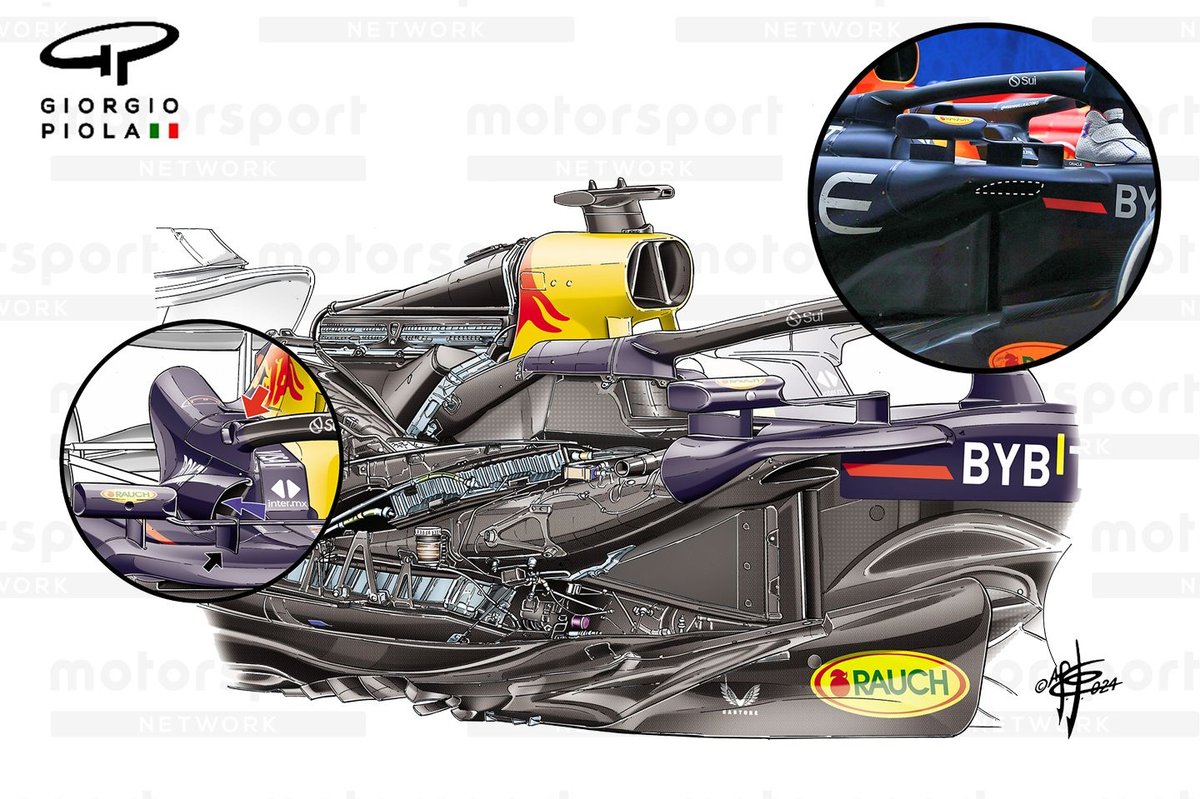P1racenews AI automatic summary:
Red Bull’s inner F1 cooling secrets explained
Red Bull’s RB20 features super small sidepod inlets and an eye-opening undercut, which are visually striking elements. The team has put in a lot of detailed work to ensure the cooling and aero needs are met. An interesting update for the Japanese Grand Prix reveals a new intake near the rear leg of the halo. These intakes, while unique for Red Bull, remind enthusiasts of Benetton’s B188 from the late ’80s.
The inlet scheme employed by Red Bull differs significantly from other teams on the grid, with cool air being fed to a smaller cooler beside the power unit. The new intakes appear to influence internal flow through the engine cover and sidepod bodywork. The team’s versatility in cooling arrangements is evident in the Japan updates, with the ability to reconfigure based on requirements.
Changes were also made to the RB20’s floor and edge wing in Japan, aiming to improve performance and local load from the floor. An axehead-style vane now protrudes from where the tail section met the floor in previous configurations. Red Bull’s strategic modularity allows for adaptability going forward, ensuring efficiency in cooling and aerodynamics.






